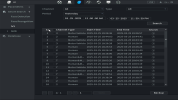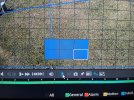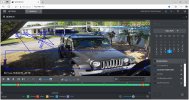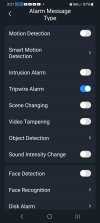There are a lot of people out there who say SMD is bad, and unfortunately, that kind of thinking makes others stop using a feature that could actually improve their security. The truth is, SMD has advantages that IVS just doesn’t offer, and both systems have their place depending on the situation.
One of the biggest benefits of SMD is its ability to filter out unwanted motion while still giving you control over the types of alerts you receive. With IVS, if you have a tripwire or intrusion rule set up, you get an alert no matter what triggered it. With SMD, you can choose whether you want to be notified about humans, vehicles, or both. That kind of flexibility makes a difference, especially when you’re using an app to monitor activity in real time.
People who use full-time recording with IVS might complain about SMD because they’re focused on keeping their timelines perfectly segmented, with green for full-time recording and blue for IVS-triggered events. If they enabled motion detection with SMD, they would get extra recordings and alerts, which they see as clutter. But that doesn’t mean SMD is bad—it just means they don’t need it for their specific setup. In fact, SMD can be a game-changer for those who don’t record 24/7 and need better filtering for motion-triggered events.
In areas with a lot of environmental triggers like rain, snow, and bugs, SMD helps filter out unnecessary motion that would otherwise send unwanted alerts. But even more importantly, there are times when SMD will capture an event that IVS might miss. If heavy rain or snow is covering the lens, IVS tripwires can fail because they rely on a clear, defined crossing to trigger an event. SMD, on the other hand, works based on motion in a grid area, meaning that even if a person or vehicle is partially obscured by weather, it still has a chance to register. The same applies at night, where certain conditions might cause IVS to miss an event that SMD could still detect.
People need to stop telling others to avoid SMD entirely. It’s not about choosing one over the other—it’s about understanding when to use each tool. If SMD improves coverage and captures events that IVS might miss, why not use it? Security should be about what works best, not just following what others say.
Plus, when it comes to my AI DVRs, which only have a few IVS channels but offer SMD for the rest, why wouldn’t you use SMD instead of relying on basic motion detection? Some people say not to use built-in AI because it supposedly lowers the recorder’s performance, but I haven’t seen any issues with that on my Amcrest 7108-AI or 5108-I3 8MP DVRs.
In the 3rd picture that is showing the SMD in search with Human and Vehicle picked and added ch1 that is IVS with a tripwire. First picture is just SMD channels in Motion search before adding the filters that is again the 3rd picture.. Center or second picture is doing just SMD Ai search from Ai menu..
One of the biggest benefits of SMD is its ability to filter out unwanted motion while still giving you control over the types of alerts you receive. With IVS, if you have a tripwire or intrusion rule set up, you get an alert no matter what triggered it. With SMD, you can choose whether you want to be notified about humans, vehicles, or both. That kind of flexibility makes a difference, especially when you’re using an app to monitor activity in real time.
People who use full-time recording with IVS might complain about SMD because they’re focused on keeping their timelines perfectly segmented, with green for full-time recording and blue for IVS-triggered events. If they enabled motion detection with SMD, they would get extra recordings and alerts, which they see as clutter. But that doesn’t mean SMD is bad—it just means they don’t need it for their specific setup. In fact, SMD can be a game-changer for those who don’t record 24/7 and need better filtering for motion-triggered events.
In areas with a lot of environmental triggers like rain, snow, and bugs, SMD helps filter out unnecessary motion that would otherwise send unwanted alerts. But even more importantly, there are times when SMD will capture an event that IVS might miss. If heavy rain or snow is covering the lens, IVS tripwires can fail because they rely on a clear, defined crossing to trigger an event. SMD, on the other hand, works based on motion in a grid area, meaning that even if a person or vehicle is partially obscured by weather, it still has a chance to register. The same applies at night, where certain conditions might cause IVS to miss an event that SMD could still detect.
People need to stop telling others to avoid SMD entirely. It’s not about choosing one over the other—it’s about understanding when to use each tool. If SMD improves coverage and captures events that IVS might miss, why not use it? Security should be about what works best, not just following what others say.
Plus, when it comes to my AI DVRs, which only have a few IVS channels but offer SMD for the rest, why wouldn’t you use SMD instead of relying on basic motion detection? Some people say not to use built-in AI because it supposedly lowers the recorder’s performance, but I haven’t seen any issues with that on my Amcrest 7108-AI or 5108-I3 8MP DVRs.
In the 3rd picture that is showing the SMD in search with Human and Vehicle picked and added ch1 that is IVS with a tripwire. First picture is just SMD channels in Motion search before adding the filters that is again the 3rd picture.. Center or second picture is doing just SMD Ai search from Ai menu..
Attachments
Last edited:







